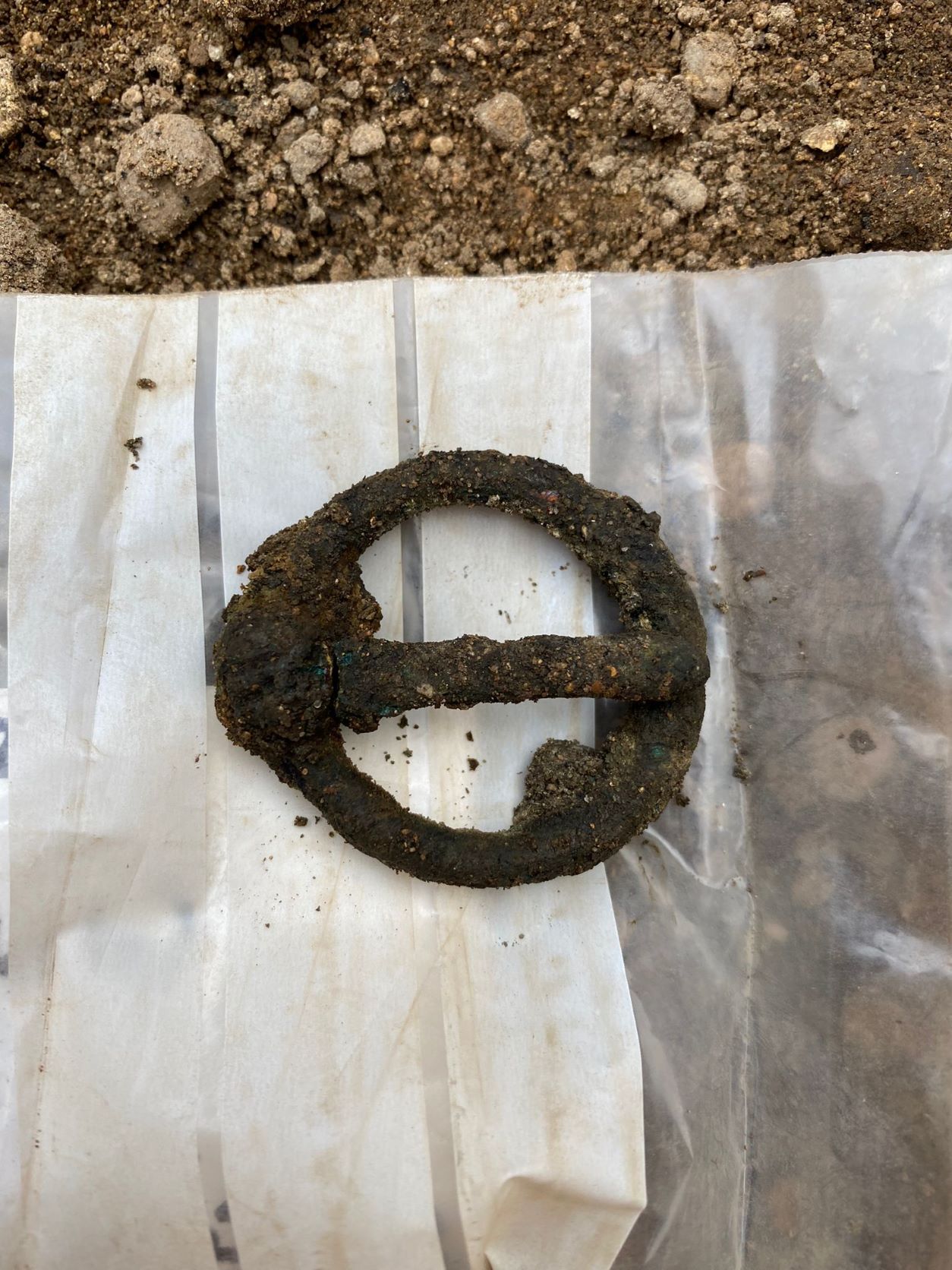The BBCs 'Digging for Britain' are onsite this week to film for their BBC series.
The Norman Period
surviving part still in use). Home to wealthy and influential members of the Norman elite. Oxford Archeology are excavating a large number of pits relating to this phase of occupation and the finds reveal details of their lifestyle. From details of their clothing/horse gear (buckle), to playing games (bone gaming counter), to spinning yarn (spindle whorl), to writing (bone styli) - a tangible picture of life is emerging.
The possible prehistoric mound
OA believe this mound is sealed by Late Saxon soils and features - so it must be earlier than c 900-1000 AD. OA have also seen the mounds defining ditch to the south and west - it is over 1m deep and potentially 2m wide.
OA have also recovered more human bone - the total now includes two sides of jaw (mandible), a number of skull fragments, part of a pelvis, part of a tibia, and part of a femur. If these are all from a single individual it suggests the entire original grave has been disturbed by later activity and the bones scattered – albeit relatively locally.
Last Friday experts from the Oxford Dating Lab (part of Oxford University) took samples of the mounds soils. The date of the soils last exposure to sunlight from looking at the quartz crystals in the soil; using Optically Stimulated Luminescence dating, will enable OA to understand the 'absolute chronology' of the soils.
Building work
In addition to supporting the archaeological work the contractor is starting to construct new foundations adjacent to the access into Frewin Hall extension. As Oxford archaeology complete their work the contractor will gradually be able to start the next phase of work which includes preparing the substructure, forming the lift shaft, form work for vertical elements and the basement slab, ahead of the arrival of the structural steel in May 22.
They are also constructing a sample panel of the proposed new stonework which will remain in place for the duration of the project for viewing by planners and the college community.
[Photo of a recently discovered belt buckle or horse fitting]
